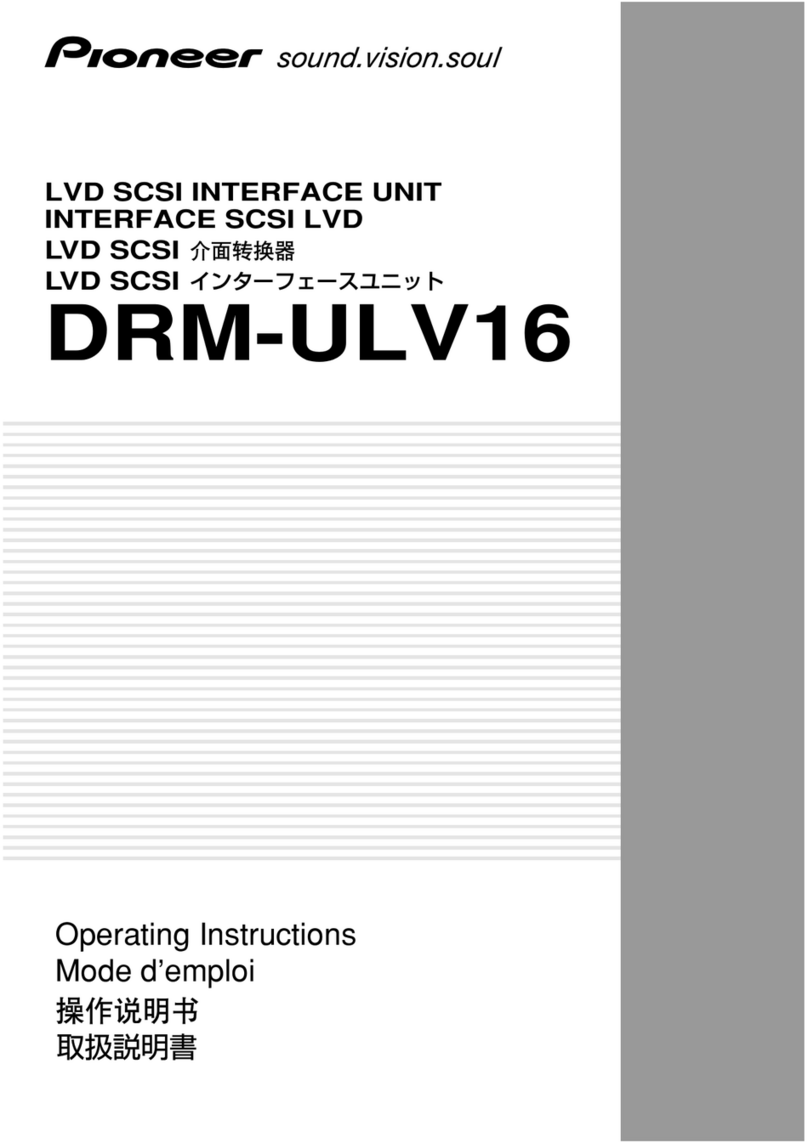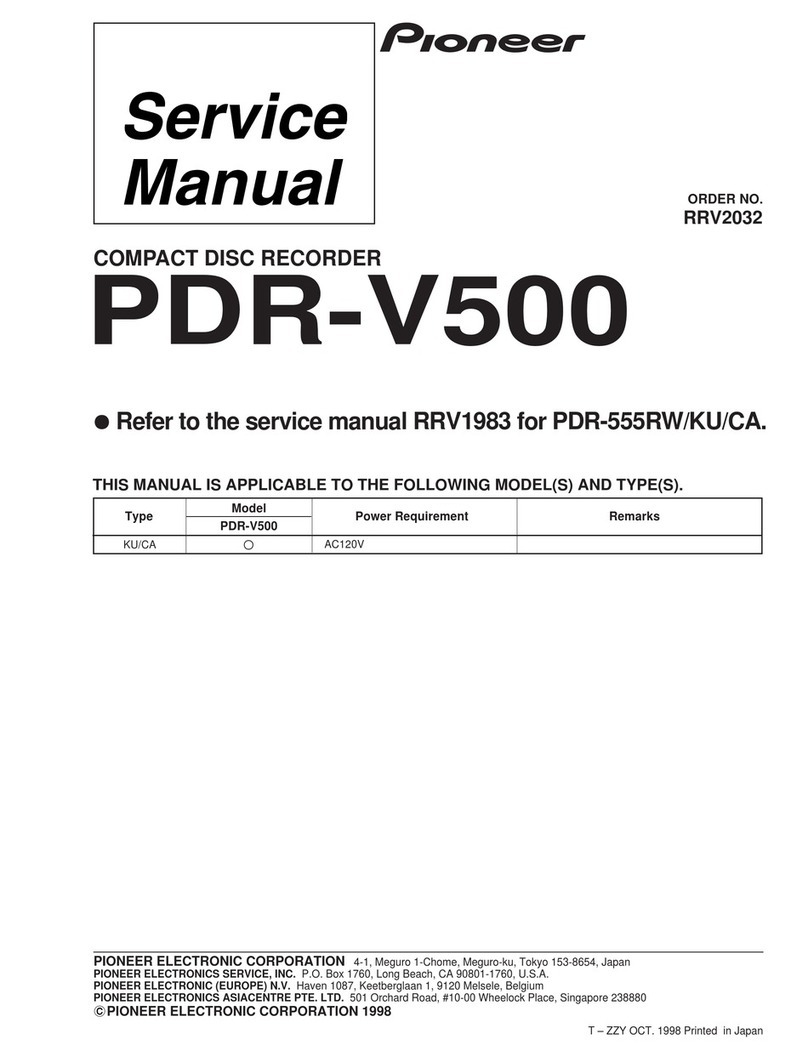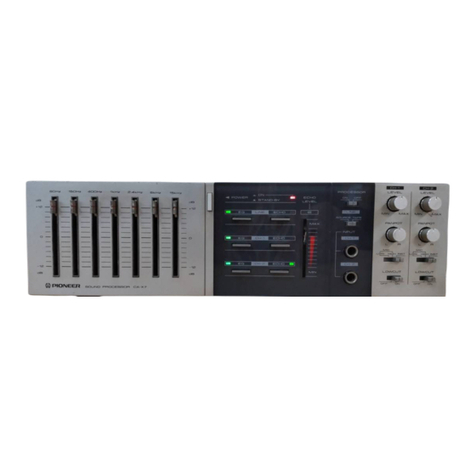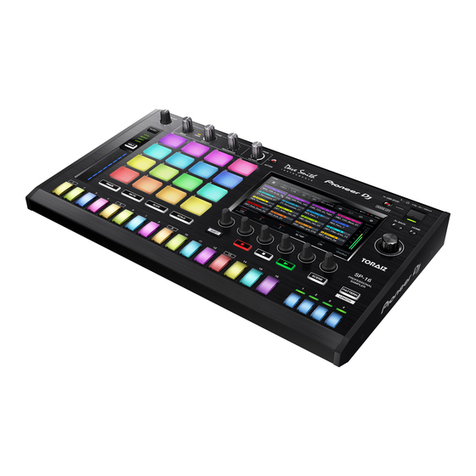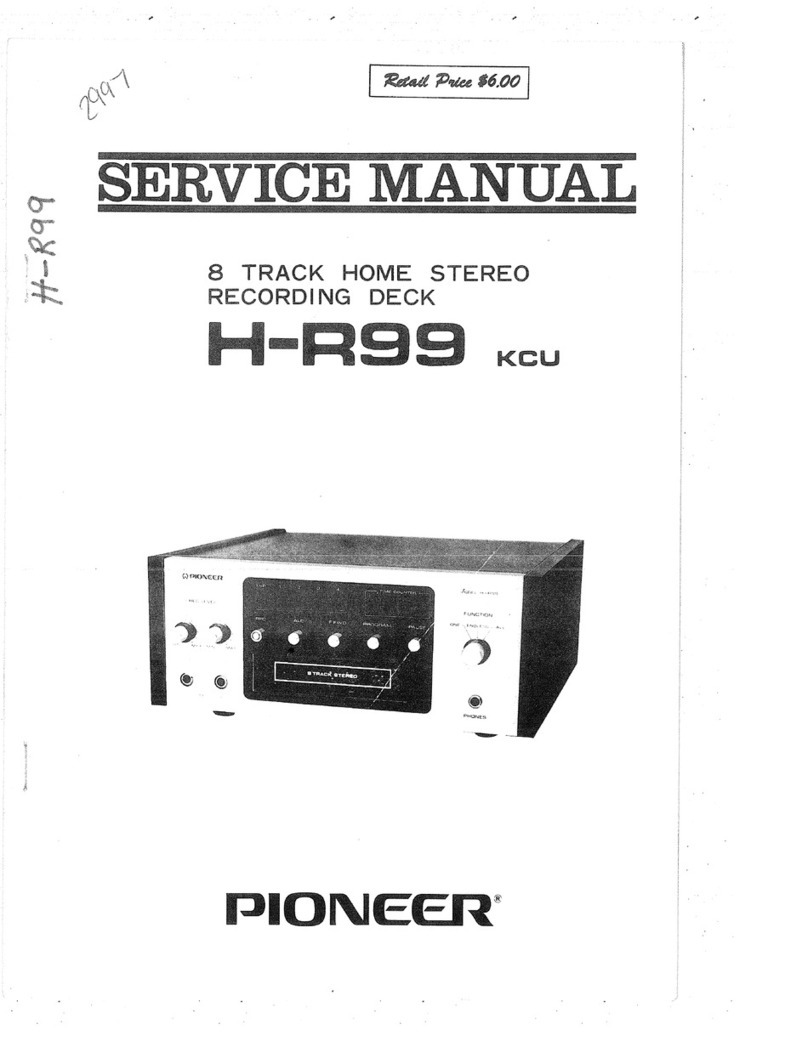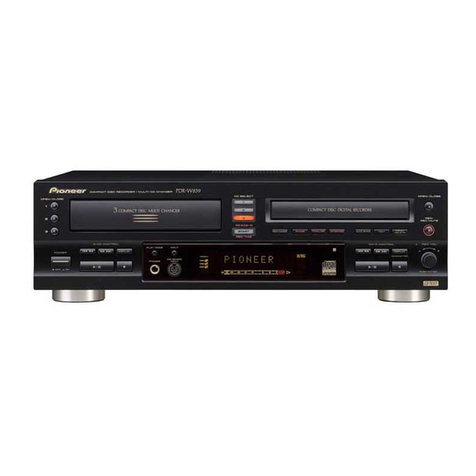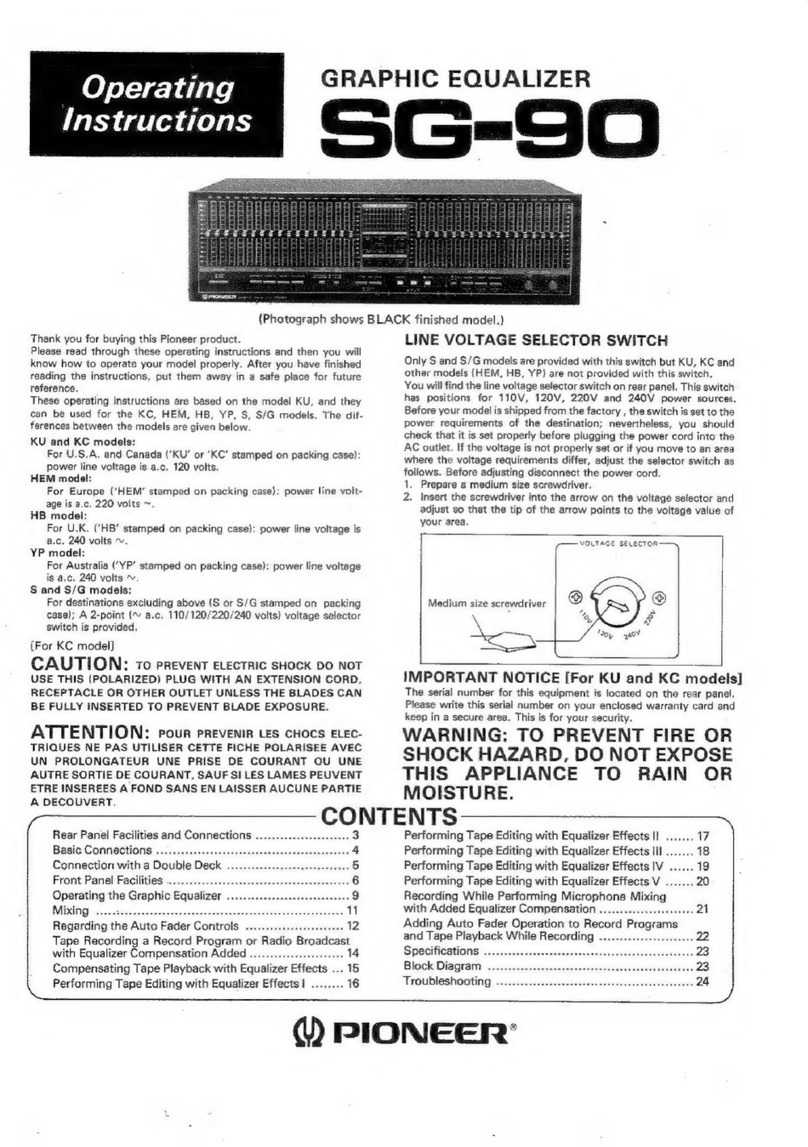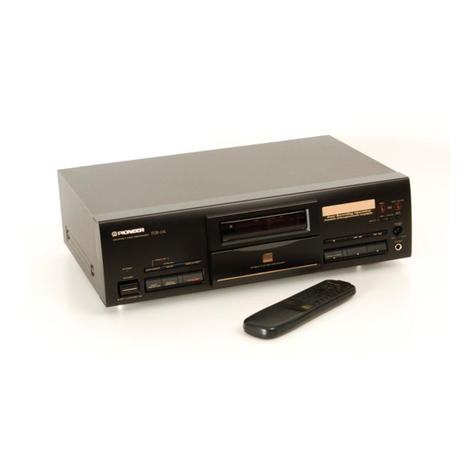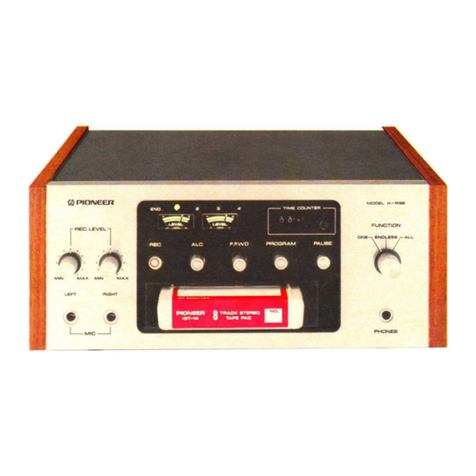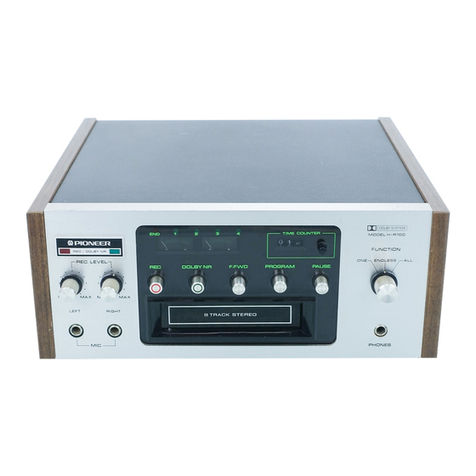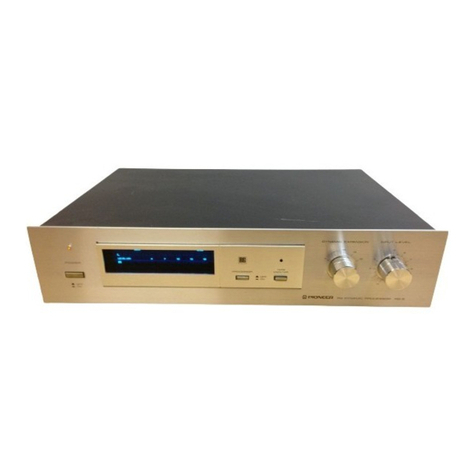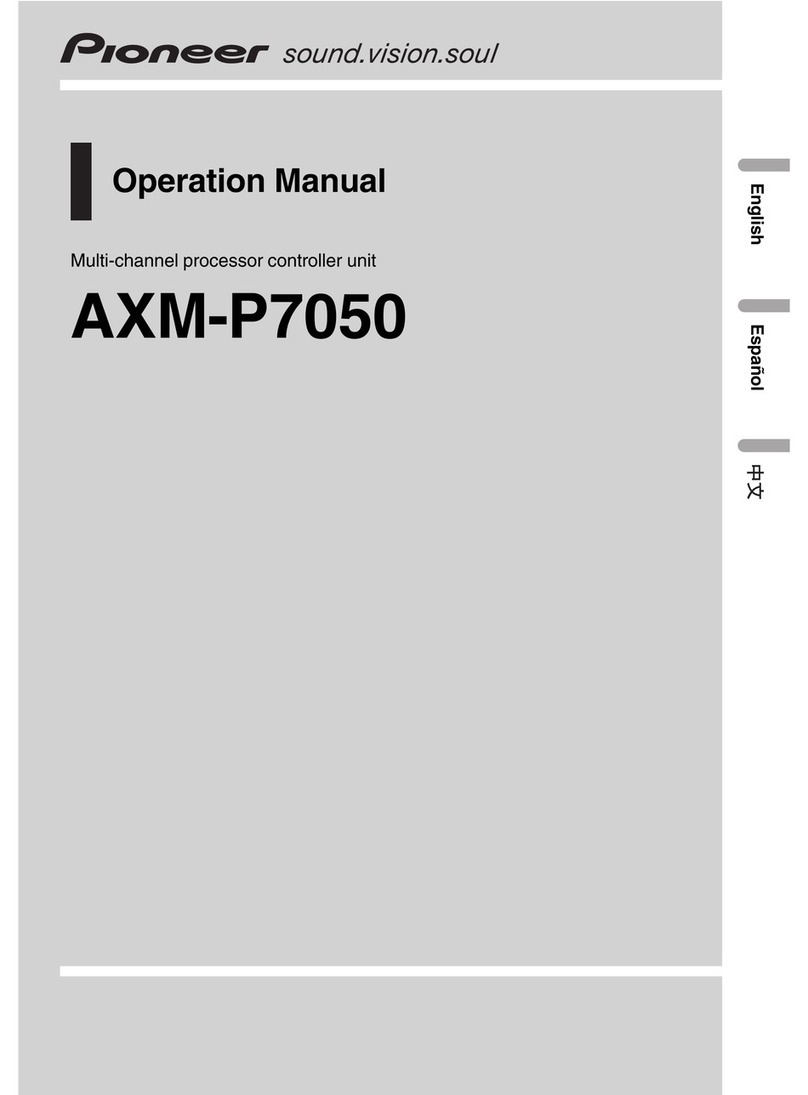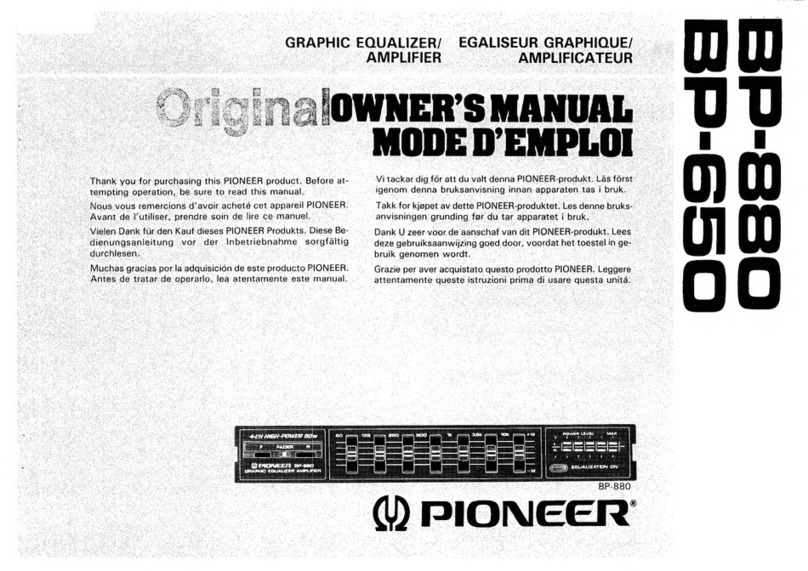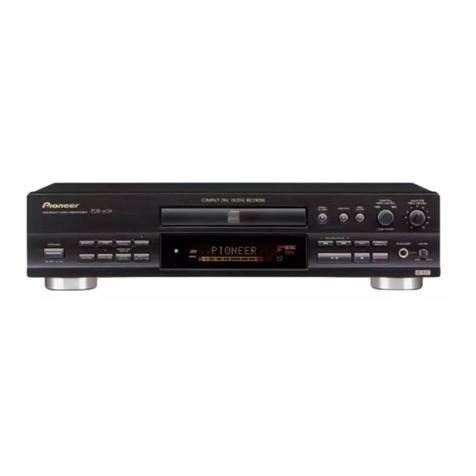4. CIRCUITDESCRIPTIONS
GRAPHIC
EOUALIZER
SECTION
A graphic equalizer is a device which divides the
audio frequency band into severalsegmentscalled
octaves so that the level of each individual octave
can be increased
or reduced. The SG-530 divides
reproduced frequencies into 7 octaves with center
frequencies
of 60H2, 150H2, OOHz, 1kHz,
2.4kHz, 6kHz and 15kHz. The level of each
octavecanbe varied
throughout arange
of 110 dB,
and the left channel and the right channel can be
adjusted independently.
Further, when the equalizer switch (EQ SW) is
ON, the LEDs built into the level controls (sliding
variable resistor knobs) light to allow the fre-
quency response
of eachoctaveto be determined
visually. The equalizer element is an LC series
resonance circuit in which the active element is
an inductor equivalent. This resonance circuit is
connected to the variable resistor linking the
positive and negative input terminals. (See Figure
4-1.)
This causesthe impedance of the resonance
circuit and the resistanceof the variable resistor to
act as constants for the input circuit and the
feedback circuit. Further, buffer amplifiers are
located before and after the EQ AMP so that the
frequency responseof the equalizer element are
not affected by the impedance of audio equipment
connectedto the SG-530.
Figure 4-1 shows the equivalent circuit for the
graphic equalizer section. In the area surrounded
by the dotted line, the circuit on the Q1 side of
point A is equivalent to an inductance and a
resistance connected in series. Any required re-
sonant frequency can be obtained by changing the
inductance and capacitance of the seriesresonance
circuit by varying CI, C2, R3 and R4. With the
SG-530, 7 equalizer elements with different
resonance frequencies are included in one EQ
AMP, and eachfrequency segmentcanbe adjusted
independently. The frequency response of each
octave is boosted when the slider of the variable
resistoris moved toward the minus input side(the
feedback input side) of EQ AMP ICl; conversely,
it is reduced when the slider is moved to the plus
side.
POWERSUPPLY
CIRCU!T
As is shown in Figure 4-2, two voltage (+11 V
and - 11.5 V) are supplied by the regulatedpower
supply of the graphic equalizer section.The LED
set in the knob of eachsliding resistor is supplied
with stable current by Q23, so the light emitted
4
by the LED is steady. Further, the load on Q18
and q2L is light because the LED current is
obtained after full wave
rectification. Q23 goes
ON
when the EQ switch is tumed ON to release
GND
on the base side, and the LED lights when Q23
goes
ON.
swlTcH
sEcTloN
o TAPE switch(S1-3)
This switch selectsbetween aprogram sourceor
atape playback (or REC monitor) signal.
. EO RECswitch
(S1-1
and
S1-2)
Turning this switch on causes an equalized
program source signal to be output to the REC
terminals.
o EO
switch
(S1-1)
This switch determines whether or not a signalis
to be equalized; when this switch is OFF, the
equalizing circuit is by-passed and the input
signal is connected directly to the output ter-
minals.
J
Fig.4-1 Graphicequalizer
FOR
SLIDE
VR KNOBLEO
t-?
tq
l€(
ta{
Iq
lt-
tl
AC
LII
EQ
AMP
nrrenuai'e
I
+llV
Q23
Fig.4-2 Power
supply
circuit

